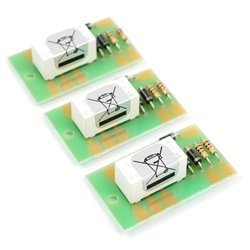There is no need to replace the bottle, it is more than likely a build-up of dry glue inside the nozzle. This is a...
No products
Product successfully added to your shopping cart
There are 0 items in your cart. There is 1 item in your cart.
Search Tips
Christmas and New Year
We are dispatching orders every weekday apart from Christmas Day, Boxing Day and New Year's Day.
If you order is time critical, select next day delivery at checkout.
The shop in Sandown is closed from 25th December, reopening on 30th December.
What is an electrical relay?
Electrical relays perform so many different tasks that it would be very difficult to definitively say that a relay does X, Y or Z, but in essence, relays are switches that operate without you having to be there.
There are no doubt many experts that will provide much more in-depth analogies of a relay, but jargon doesn't help any poor soul that is trying to understand them for the first time. An electrical relay in its most basic form is a large switch and a small switch all in one casing, the smaller switch operates the larger switch.
The biggest application for this seemingly overly-complicated setup is when you need to operate a very powerful circuit, a switch capable of turning such a circuit on or off would have to be much larger and more heavily engineered than your basic pound-shop toggle switch. The solution to this is to have a simple low voltage circuit with a neat little switch and tidy wiring that controls the smaller switch inside the relay, in turn, the relay's smaller switch takes care of turning the high powered circuit on or off. The beauty of this system is you don't have to be anywhere near the high-powered circuit at the time, the low-powered circuit can lead to a pound-shop toggle switch far away or even be automated to be triggered by, for example, a train passing over a certain section of track.
To put it another way, if you think about the many different types of manual switches there are in the home, controlling everything from simple lights to a plug socket and imagine how relatively simple that circuit would be. Now consider more complicated electrical equipment such as a dishwasher or microwave oven that rely on remote-control, sensors, programmable keypads or timers to operate, then relays start to make more sense and furthermore you start to get an idea of how many different types of relay there must be.
With this in mind it is not likely that you will face a modelling problem that makes you think of a specific relay to solve it, but at least knowing that relays exist and what they can do, you can ask at an expert store and maybe discover that the solution to your problem is just one relay away.
Click here to receive the tips weekly in your mailbox. You can unsubscribe at any time.









